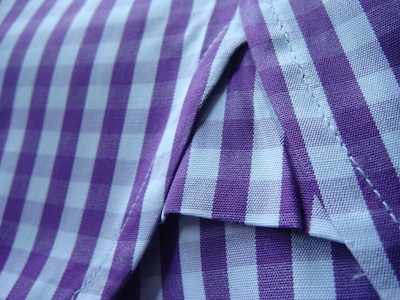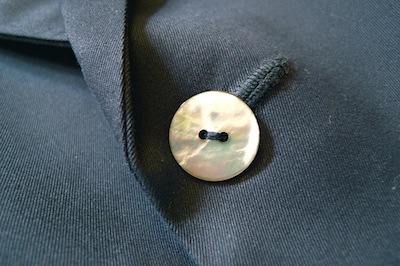- Home
- Style Advice Blog
- Shirts
Style Advice Blog
Recent Posts
The A-Z of Dress Shirts - Everything you need to know
Posted by on
A is for Alumo - Alumo is a Swiss cotton-manufacturing firm based in Appenzell and is one of the world's leading producers of the highest quality two-fold cotton shirting fabrics.
B is for Bespoke - Bespoke, when applied to tailoring means that the buyer has total control over the fabric used, the features and fit, and the way the garment should be made. More generally, bespoke describes a high degree of customisation by the end-user in the production of the garments. The difference between bespoke and made-to-measure is that the latter alters a standard sized pattern to fit the customer.
C is for Cotton - The defining feature of a high quality shirt is that it is made from 100% cotton. Wrinkle-free or stretch fabrics may be more convenient, however, will contain varying quantities of polyester.
D is for Darts - Dress shirt darts are two parallel stitches sewn vertically to provide a better fit and give the shirt a better shape so that it enhances the shirt wearer's figure. The purpose of darts is usually to make a slim fit dress shirt.
E is for Epaulette - The Epaulette (Epau Loops) is the ornamental shoulder strap parallel to the shoulder seam that buttons up near the collar. It was originally used by the military.
F is for Fused Collar / Cuff - A Fused collar is when the interlining is glued to one or both layers of the collar/cuff fabric. The interlining is a harder piece of material that acts as a skeleton to make the collars and cuffs rigid and stiff. English shirtmakers prefer to sew the interlining whilst Italian shirtmakers prefer a fused collar and cuff.
G is for Gusset - The Gusset is the triangular piece of fabric at the bottom of the side seam to add strength and relieve stress from tight fitting clothing

H is for Herringbone - Herringbone is a type of weave. It is usually found in twill fabric and is called herringbone because it resembles the skeleton of a herring fish. Tweed cloth is most often woven with a herringbone pattern.
I is Ironing - It is essential that a shirt be ironed before it is worn. Here is our guide on how to iron a dress shirt.
J is for Jermyn Street - Jermyn Street is a street near Piccadilly Circus that links Regent Street with St. James Street, the home of the most famous shirt-makers in the world. Jermyn Street sums up the style and origins of the English tradition of shirt-making although these days, none of the Jermyn Street shirtmakers stock shirts that are sewn by hand.
K is for Karl Lagerfeld - Karl Lagerfeld's signature look is a dress shirt with an extremely high rigid white collar - and apparently he has thousands of them.

L is for Length - More particularly, Sleeve Length.With your arm at your side and your shirt cuff buttoned, you should just be able to touch the tip of your shirt sleeve with your middle finger folded back against your palm. Additionally, you should be able to stretch your arms out without the sleeve traveling more than a half-inch up your wrist.
M is for Mother of Pearl - The Mother of Pearl button is used on a lot of high quality shirts and comes from the inside of an oyster shell. Although it is stronger than plastic, it is also more likely to degrade after repeated exposure to laundry detergent.

N is for Neck / Collar - There are a large range of collar shapes that are suitable for different face shapes, different occasions or worn with different neck ties. But as a general rule, your collar should be high enough to protrude about half an inch above the collar of a suit jacket. If you wear your shirt with a tie, the collar’s points should still be able to touch the shirt’s front with the tie fastened.
O is for Oxford - Oxford cloth, the coarsest shirting fabric, is actually quite soft and comfortable. The Oxford is considered a more casual fabric and its most natural form is the button-down collar.
P is for Placket - The Placket refers to the piece of fabric running down the centre of a shirt that holds the buttons and buttonholes. Plackets are almost always made of more than one layer of fabric, and often have interfacing in between the fabric layers to give support and strength to the placket fabric because the placket and the fasteners on it are often subjected to stress when the garment is worn
Q is for Q...?
R is for Ribbed Twill - Ribbed Twill has a diagonal structure that is similar to the material used in chinos. The lightly shimmering look of ribbed twill gives plain shirts an interesting accent.
S is for Sea Island Cotton - Sea Island Cotton is the most expensive cotton and has about 140 threads to the inch, giving it a softer, silkier feel. Stripes or checks in this material have a clearer definition and deeper and stronger colours.
T is for Two-Ply - Two-ply fabric means that two yarns have been intertwined into one before being woven. It does not mean that there are two pieces of fabric layered on top of each other. Two-ply fabric is stronger and smoother than single-ply.
U is for Undershirt - The Undershirt is the shirt that some men wear under their dress shirts and there's a lot of debate as to whether or not an undershirt should ever be worn. Whatever your stance is, make sure that your undershirt is not an outer-shirt and that it fits you correctly!
V is for Viyella - Viyella is a mixed weave that combines the warmth of wool and the comfort of cotton. Viyella is mainly used for the production of Tattersall check shirts.
How to wear your boyfriend's shirt?
Every girl has days when they just don't want to get dressed or days of just wanting to put a big bag over their heads but still appear presentable. Well, it's great that your boyfriends can come in handy on these days. In the last few weeks, The Sartorialist has featured quite a few pictures [...]
How to Stand Out at Work - The Boys Version
Back in the days when we used to walk around in a suit all day, there was one thing we always noticed - guys at work wearing the same shirts. Don't get us wrong - wearing a plain white shirt is certainly not a crime, but your chances of getting noticed by the big boss [...]
Go Gingham
Gone are the days when gingham was only used for picnic table cloths and your grandmother's curtains. It's one of the most versatile fabrics this season and we know this because they've been our best-sellers! Here's a few ways you can wear you custom-made gingham shirt.Images via Have less Be More/ Guy Style Guide/ The [...]
How do you know your shirt is high quality?
We often get asked why our shirts are more expensive than other shirts available online and we always give people the same answer: we’re not that keen on comparisons because it’s like comparing apples to oranges. We can only guarantee that all Joe Button custom-made men's shirts and women's shirts are made from 100% cotton and our [...]
 Loading... Please wait...
Loading... Please wait...

